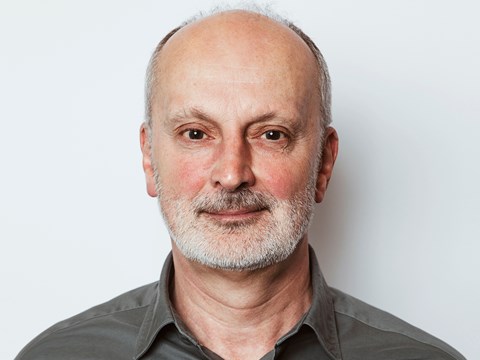Why we need creativity more than ever
03 Jan 2021
Probably my favourite definition of creativity is from Rollo May, an American psychologist, who said in The Courage to Create:
“Creativity is the process of bringing something new into being. Creativity requires passion and commitment. It brings to our awareness what was previously hidden and points to new life. The experience is one of heightened consciousness: ecstasy.”
That first line is utterly inspiring, wouldn’t you agree?
If the monumental efforts of all those involved in creating each of the COVID-19 vaccines proves one thing it’s the power of people to confront and explore such challenges and innovative solutions with a creative mindset. To perceive the world in new ways, to find those hidden patterns, to make connections between seemingly unrelated phenomena, and to generate solutions to the biggest problems our world faces today and bring a new vaccine into being. Ecstasy, indeed.
For Creativity (the ‘ity’ bit of the word is important) to have value it must involve two processes: thinking, then producing. Thinking without producing is just imagination, not creativity.
The secret to unlocking the power of creativity lies in building the right environment for thinking to flourish, being willing to take risks and to progress through a degree of discomfort to get to the finish line.
“The most exciting phrase to hear in science, the one that heralds new discoveries, is not ‘Eureka! I’ve found it’ but ‘That’s funny.”
Issac Asimov
That was the most impressive aspect of all the teams involved in creating these new vaccines; how they looked at risk. From how they thought it could be made that much faster to producing the vaccine in vast numbers before tests had been concluded or approvals granted.
Equally impressive was how these multi-national pharmaceutical companies brought fresh perspectives into the mix from outside their organisations – Oxford Uni and AstraZeneca, for example, have a long-standing relationship – as well as securing funding from governments. A true investment in creativity, and what an asset it turned out to be.
Prompted by the impact of globalisation and the ability of competitors to pull the rug from under your feet at a moment’s notice, a study by Adobe back in 2012, found that 8 out of 10 people felt that unlocking creativity was crucial to economic growth, and nearly two-thirds felt it was valuable to society. Yet only 1 in 4 believed they were living up to their own creative potential. They called it the ‘Creativity Gap’.
Speaking to many clients’ marketing teams today, this frustration is tangible as they describe their role at the far end of ‘producing’ rather than the more fulfilling ‘thinking’ part of creativity. They feel they are on a treadmill resulting in high churn rates.
So, at a time of increasing challenges for both businesses and society, should we not invest in some creative capital at work and in our education systems to unlock the solutions we need?
Can creativity be taught?
In 1968, George Land devised a creativity test for NASA to help select innovative engineers and scientists. Up in space, faced with a problem for which there is no rule book, that might be fairly important! Matt Damon in The Martian comes to mind. The assessment worked so well, he decided to try it on children and conducted a research study to test the creativity of 1,600 children ranging in ages from three to five years old who were enrolled in a Head Start programme. He re-tested the same children at 10 years of age, and again at 15 years of age. The number that attained ‘genius’ level in the tests were astounding.
- Test results amongst five year olds: 98% achieved genius level
- Test results amongst 10 year olds: 30%
- Test results amongst 15 year olds: 12%
- Same test given to 280,000 adults: 2%
His startling finding was that creativity is lost and that non-creative behaviour is what we end up learning. Five year olds have a very active ‘divergent’ brain that lets their imagination run free whereas as we get older, the ‘convergent’ part tends to dominate and closes down ideas before they become fully formed.
In his Ted talk, Land points to the challenges facing businesses today and why he believes we need to return to our infant brain if we are to find solutions to them.
Further studies have identified three key components to re-learn what you already had at the age of five:

If we stop and think about the labels that proliferate our own industry, both at an individual level (Creative Director) and a corporate one (Creative agency), are we helping or hindering the very creative potential we are seeking to unlock?
Clients need their external partners to bring them the fresh perspectives they need across a widening range of issues within their marketing ecosystems more than ever. Now is the time to invest in some creative capital.
At AAR, we are making changes and aligning ourselves to the areas where clients need fresh perspectives the most. We are seeing more than a subtle shift to the ‘thinking’ end over the ‘producing’ end of the creativity spectrum but also an acknowledgment that, by unlocking creativity to begin a new cycle of growth, the ‘expertise’ component is going to be at its weakest. For agencies to succeed they need to spend more time showing how they are managing the risk and minimising any ‘discomfort’ in their conversations with clients.
About The Author





